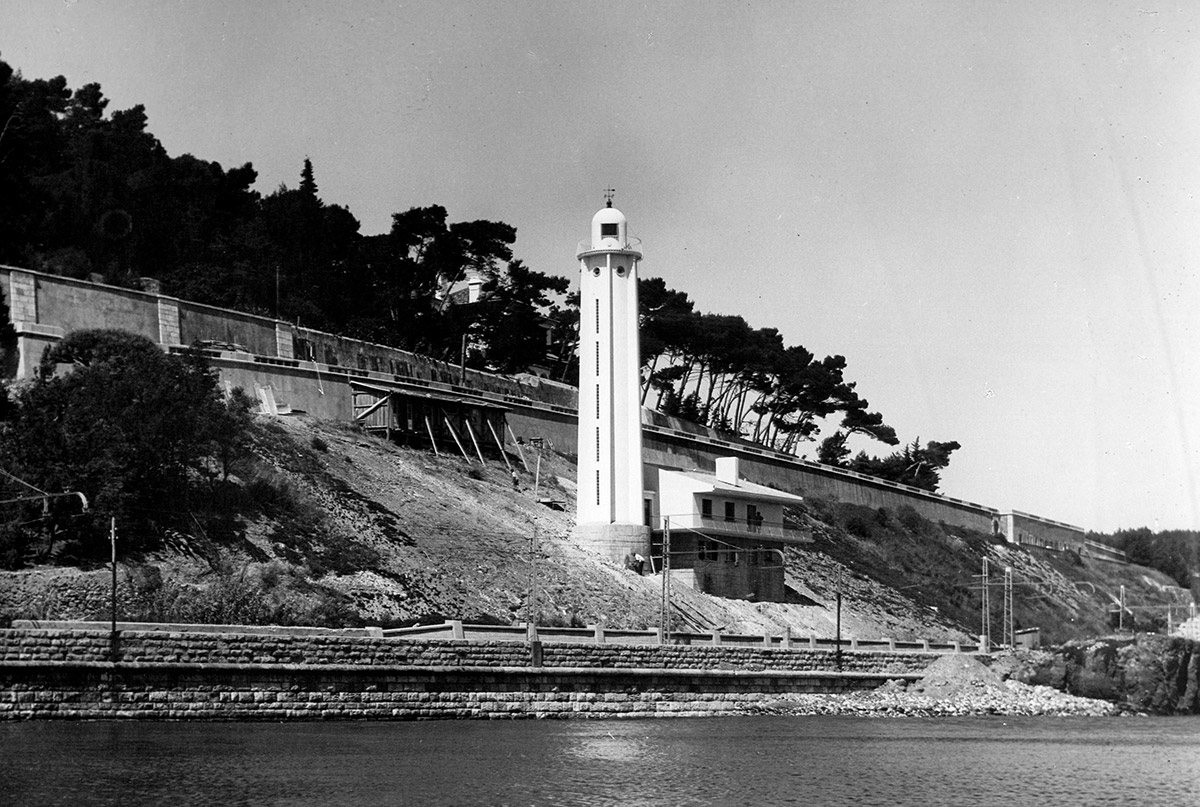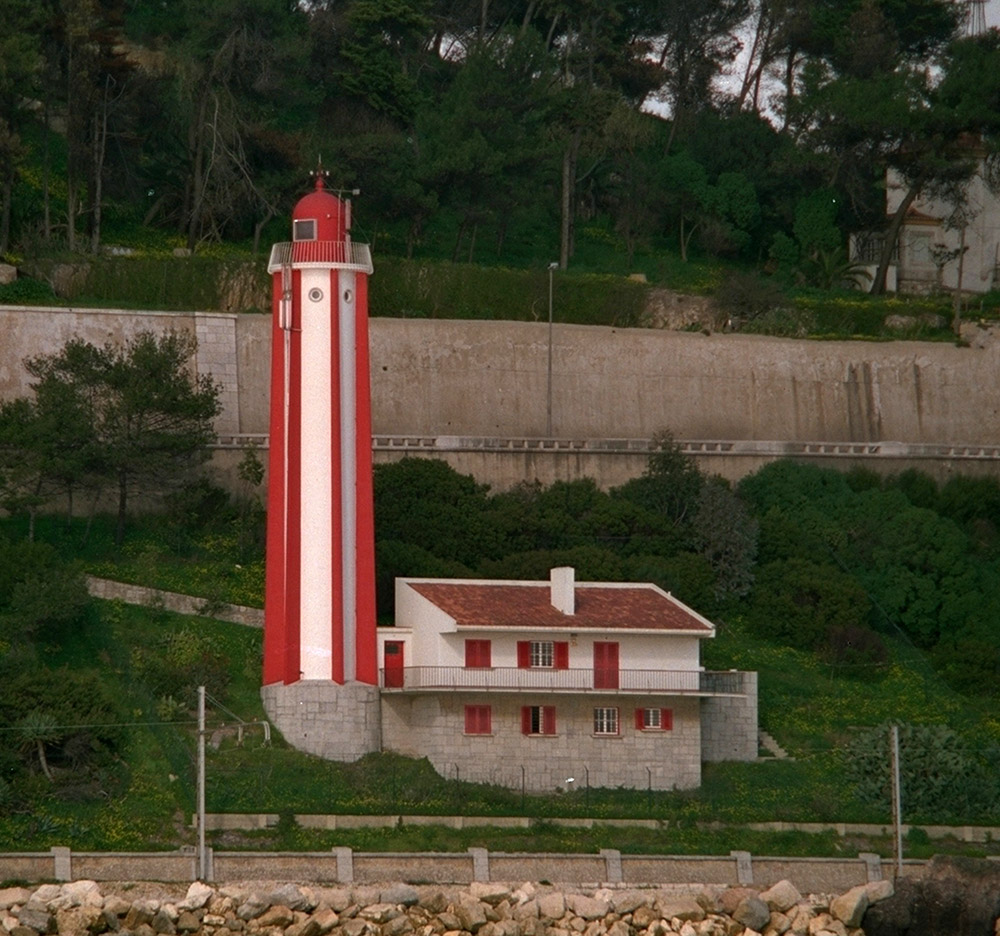Versão portuguesa aqui.
GPS 38.699578212629234, -9.26614242901478
On August 1, 1878, two red lights are created, in the places called Alto de Caxias and Porto Côvo, which determine by their threading the path that ships must follow, at the entrance and exit of the big bar of Lisbon. In December 1879, when the tower under construction at the old lookout point in Caxias was concluded, the fixed red light was placed there, which had temporarily been placed in a wooden tent. It consisted of a catoptric apparatus with a parabolic reflector and a double-twisted Argand lamp.
In Notice to Navigators No. 4 of April 7, 1913, the General Directorate of the Navy communicates the following:
«That the direction lights of the entrance channel of Barra Grande to the port of Lisbon, currently installed at the lookout point in Caxias and in Pôrto Covo, will be transferred respectively to the places where the marks of Esteiro and Gibalta, marks which, together with Mama's brand, mark the axis of that channel (...)».
The Gibalta lighthouse came into operation in May 1914, with a tower 13 meters high and 36 meters high. The optical apparatus was of the 5th order, the red light, fixed, illuminating a sector of 15º.
Fixed light changed to rhythmic light in February 1951

On March 31, 1952, there was a landslide on the slope, which caused the collapse of part of the lighthouse on the railway line. A few days later (April 3), what was left of the lighthouse was demolished and a temporary light fitted. The provisional light, moved to the base of the lighthouse tower under construction, coming into operation on February 10, 1954.
The new lighthouse was built 30 meters from the demolished lighthouse, starting to operate in May 1954. The tower is 21 meters high and 31 meters high. The optical apparatus is of the 5th order, bull's-eye type, the light source being electric incandescence with gas reserve. The temporary light has been removed.
In 1960, a radio directional beacon was installed on an experimental basis.
To attenuate the effect of the light from the side road, 4 red fluorescent lamps were mounted on the outside. From November to February, the lighthouse is lit until 9 am. In the remaining months until 1 hour after sunrise.
The experimental operation of the radio beacon was canceled in 1972.
The Gibalta lighthouse was automated in 1981 and is being monitored from the Paço de Arcos Central. It ceased to be manned by lighthouse keepers in the same year.
In 1987, the Esteiro and Gibalta lighthouses started to be permanently lit from the 1st of October to the 15th of March.
From 1997 onwards, they started to be permanently lit throughout the year.
In 2000, a new telecontrol system (“OMRON”) was set up.
LATITUDE: 38º 42', 02 N
LONGITUDE: 09º 15',89 W
HEIGHT: 21 m
ALTITUDE: 31m
RANGE: 21 MI (39Km)
FEATURE: OC R 3S (Lt 2s;Ec 1s).
